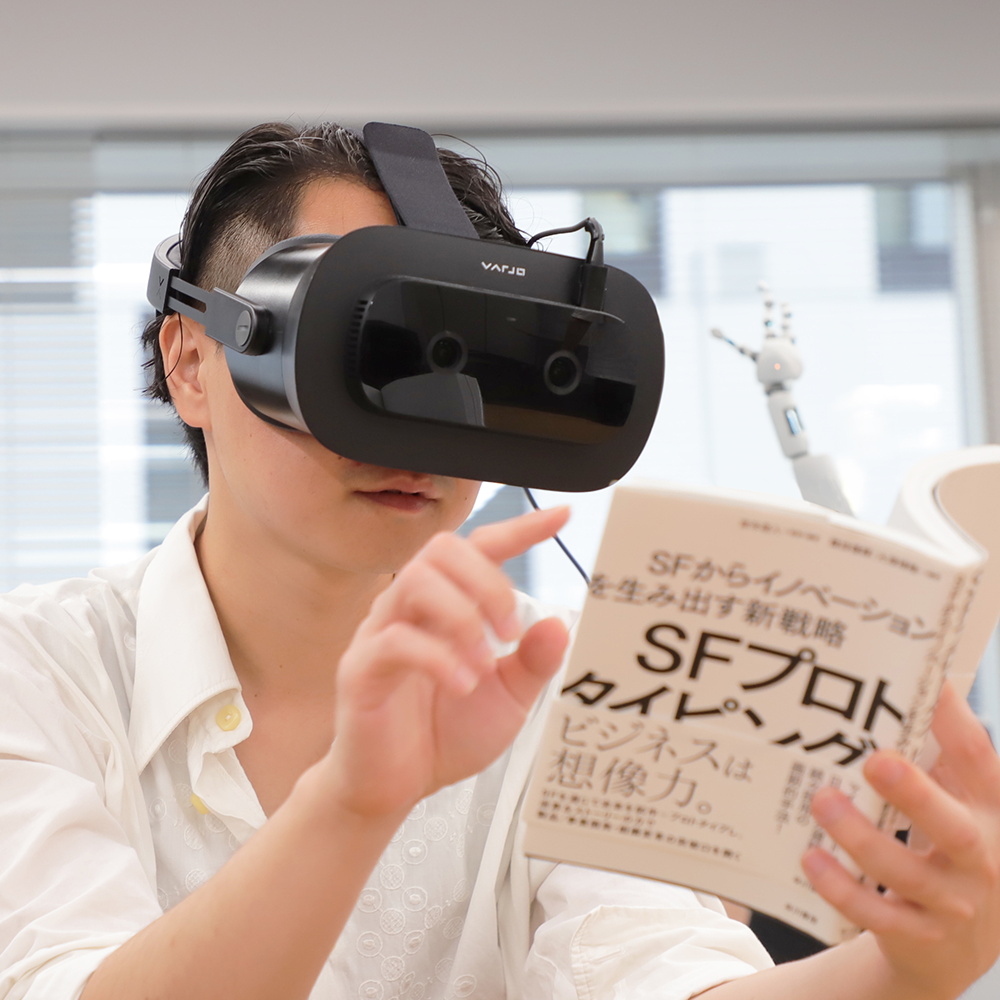Well-Being Research
Quantifying Happiness2023.10.16
This research initiative focuses on providing the value of well-being, where an individualʼs physical and mental state expands from zero to positive, rather than just reducing negatives to zero. We aim to elucidate and quantify the mechanisms of happiness.

Researching Existing Studies and Defining Happiness
The project began with the goal of understanding and quantifying the mechanisms that lead to happiness. Since the project members had no prior knowledge of happiness research, they started by studying existing research and theories. Through reading books and papers and discussing with researchers, we deepened our understanding and defined the area of happiness that DENSO DESIGN would explore:
"The happiness that comes from voluntarily wanting to try something and immersing oneself in the challenge with enjoyment."
This definition is based on the PERMA theory of positive psychology, which relates to self-actualization, and the flow theory, which relates to immersion.
Initially, we were uncertain whether this theme could be relevant for DENSO, but as we delved deeper, we realized that the pursuit of challenges and striving for better states aligned well with DENSOʼs values.

Elucidating the Mechanism of Happiness through Experiments
To understand the mechanisms that lead to "the happiness of voluntary immersion," we conducted a demonstration experiment with 120 general users. Focusing on voluntariness, we chose home gardening, a hobby with no obligation or necessity, as the theme of the experiment.
We provided two apps: "App A," which incorporated functions based on happiness theories, and "App B," which had standard features similar to common apps. We analyzed the differences in their impact.
The analysis of app usage data and happiness-related survey data revealed that the "news function" in App A, which delivered enticing information like cultivation tips and recipes, was linked to immersion and happiness. Interviews with participants further identified key elements essential for achieving the targeted sense of happiness.


Establishing the Happiness Mechanism Diagram
The "Happiness Mechanism Diagram" illustrates the mechanism leading to the happiness of voluntariness and challenge. A significant feature is the presence of both positive and negative states at each stage of the challenge.
For example, at the starting point of a challenge, there is "voluntariness," a forward-looking attitude, and "struggle," a backward-looking attitude stemming from wanting to recover from failure or avoid embarrassment. During the challenge, there are positive states like "immersion," where one enjoys the challenge, and negative states like "boredom" if the challenge is too easy or "anxiety" if it is too difficult.
We believe that progress involves alternating between positive and negative states rather than remaining consistently positive. For instance, starting a challenge with motivation (positive), feeling anxious (negative) due to its difficulty, experiencing failure, and then thinking, "I can succeed next time" (positive).
We define happiness as the state of continuing to challenge oneself, regardless of being in a positive or negative state, while the loop continues. Conversely, states like "stopping the experience" or "continuing out of inertia" are considered non-happy states. Although one may remain in a negative state for a while, most people tend to disengage from the challenge if they stay negative for too long. Therefore, guiding people towards positivity becomes an essential role for designers.
Quantifying Challenge States Using the Happiness Mechanism Diagram
We conducted further experiments with cooking as the theme to quantify the happiness mechanism diagram. By setting appropriate questionnaires for each challenge stage and weighting the questions through correlation analysis, we achieved quantification.
The survey measures the extent to which respondents feel positive or negative at each challenge stage. Using this quantification, we identified patterns that lead to long-term improvement in happiness and points that contribute to happiness enhancement. One finding is the low correlation between the "success/failure" of a challenge and the increase or decrease in happiness. Conversely, there is a high correlation with "immersion" during the challenge, indicating that the s
To develop apps that incorporate happiness, it is crucial to provide appropriate challenges. Skills akin to level designers in games, who create engaging challenge experiences, may become important.


Future Developments
With the quantification through surveys completed in the demonstration experiments, we plan to use the quantification tools in environments closer to usersʼ real lives, continuously improving the tools. Additionally, we aim to go beyond survey-based quantification by using vital data such as brainwaves and heart rate variability to obtain more accurate and less burdensome data.


Tags
Member
Poject Lead: Yuji Tsuchiya
Creative Direction: Chihiro Miyai
Research Lead: Chihiro Miyai
Research : Kento Morikawa
UI Design: Kento Morikawa
Other WorksAll Works








